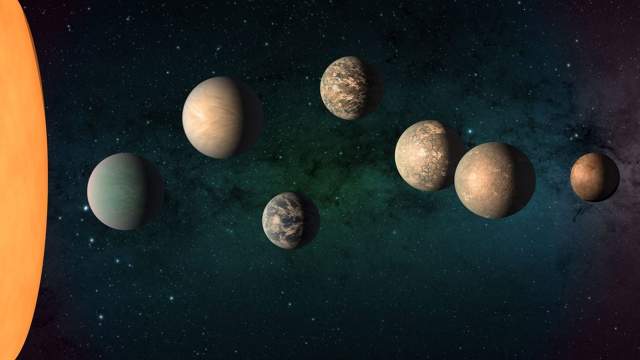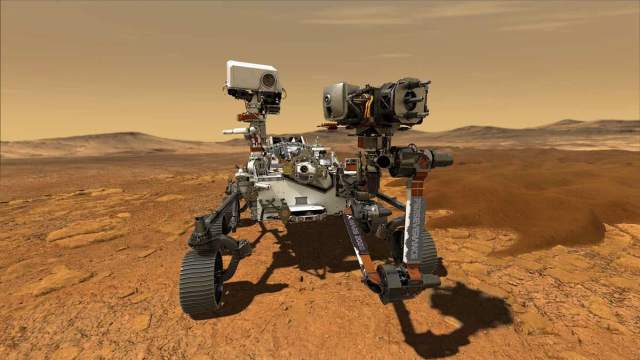Are we alone in the universe? I mean, it’s an age-old question that’s captivated humanity for centuries, right? It’s what drives us to explore the vast expanse of space. And you know what field holds the key to answering this question? Astrobiology, and it’s leading us on this incredible journey to the galactic frontier. So, let’s delve into some amazing insights into life beyond Earth.

What Exactly is Astrobiology?
Okay, so astrobiology is this multidisciplinary field that combines biology, astronomy, geology, chemistry, and even philosophy! It’s all to investigate the possibility of life beyond Earth. It’s not just about finding little green men; it’s about understanding the origin, evolution, distribution, and future of life in the universe. This includes searching for extraterrestrial organisms, exploring habitability criteria, and, you know, understanding the astrochemical processes that could lead to life.
The Possibilities of Life on Other Planets: A Universe of Potential
When you consider the sheer size of the universe, with billions of galaxies, each containing billions of stars, the possibilities of life on other planets seem almost inevitable, don’t you think? I mean, think about it, around most stars there are planets, and a lot of these planets may be located in what we call the habitable zone. We’ll touch more on this shortly.

The conditions necessary for life as we know it (you know, carbon-based life requiring liquid water) might be just one recipe. Life could potentially exist in forms we can’t even imagine!
Challenges in Detecting Extraterrestrial Life: A Cosmic Needle in a Haystack
Despite the vast potential, detecting extraterrestrial life presents enormous challenges. I mean, space is, well, spacious! Even reaching our nearest stellar neighbors is a monumental task with current technology. There are other challenges too, like:
- Vast distances: Signals from distant planets could take thousands, even millions, of years to reach us.
- Limited technology: Our current instruments can only detect certain types of biosignatures, and even those detections can be kind of ambiguous.
- Unknown life forms: We might be looking for the wrong signs altogether. I mean, life elsewhere could be based on entirely different chemistry or energy sources.

The Impact of Astrobiology on Space Exploration: Guiding Our Missions
So, astrobiology isn’t just a theoretical pursuit; it directly impacts space exploration. Understanding the potential for life, and the conditions that support it, helps us prioritize targets for space missions. For example:
- Mars Exploration: You know, astrobiology studies on Martian life potential have driven numerous missions to the Red Planet, like the Perseverance rover, which is actively searching for signs of past or present life.
- Europa and Enceladus: These icy moons of Jupiter and Saturn, respectively, are thought to harbor subsurface oceans, making them prime targets in the search for extraterrestrial life.
The Role of Extremophiles in Astrobiology: Life Finds a Way
One of the most fascinating aspects of astrobiology is the study of extremophiles. Basically, these are organisms that thrive in extreme environments on Earth – environments that we once thought to be completely uninhabitable. Here are a few examples:
- Thermophiles: Organisms that love extreme heat, found in hot springs and deep-sea vents.
- Psychophiles: You know, organisms that thrive in extreme cold, found in polar ice and glaciers.
- Acidophiles: Organisms that love highly acidic environments.
- Halophiles: Organisms that live in extremely salty environments.

The Goldilocks Principle
As we touched on before, the search for habitable zones beyond Earth is a cornerstone of astrobiology. The habitable zone, also known as the “Goldilocks zone” is the region around a star where conditions are “just right” for liquid water to exist on a planet’s surface. And as we know, liquid water is a pretty essential ingredient for life as we know it.
However, the habitable zone concept is constantly evolving. We now know that liquid water can exist outside the traditional habitable zone, such as in subsurface oceans on, you know, icy moons.
Advancements in Astrobiology and Space Technology: Expanding Our Reach
Okay, so advancements in astrobiology and space technology are constantly pushing the boundaries of our search. New technologies are enabling us to:
- Detect exoplanets: Telescopes like Kepler and TESS have discovered thousands of exoplanets, some of which are potentially habitable. Cool, right?
- Analyze exoplanet atmospheres: The James Webb Space Telescope is designed to study the atmospheres of exoplanets, searching for biosignatures – basically, indicators of life.
- Develop new detection methods: Scientists are developing innovative extraterrestrial life detection methods and instruments, such as probes that can analyze soil samples and devices that can detect faint chemical signals.

Galactic Environments Suitable for Life: Beyond the Habitable Zone
While the habitable zone is a key focus, galactic environments suitable for life might extend beyond this traditional definition. There are a few factors to consider you know:
- Galactic Habitable Zone: A region within a galaxy where conditions are favorable for the long-term stability of planetary systems and the evolution of complex life.
- Presence of heavy elements: Stars and planets need heavier elements (beyond hydrogen and helium) to form.
- Absence of harmful radiation: Areas with high levels of radiation from supernovae or, you know, active galactic nuclei would be less hospitable to life.
The Significance of Water in Astrobiology: The Elixir of Life
I mean, the significance of water in astrobiology can’t be overstated. Water is a remarkable solvent, allowing for the complex chemical reactions necessary for life. It also plays a crucial role in regulating temperature and transporting nutrients. Sure, while other liquids could potentially support life, water remains the most likely candidate.
Comparative Planetology in Astrobiology Research: Learning from Our Neighbors
So, comparative planetology, comparing the geology, atmospheres, and other features of planets in our solar system, is crucial in astrobiology research. By studying Mars, Venus, and other celestial bodies, we gain a better understanding of how planets form, evolve, and, you know, potentially support life. This comparative approach helps us interpret data from exoplanets and refine our search strategies.
Astrobiology and the Habitability of Exoplanets: A New Era of Discovery
The study of astrobiology and the habitability of exoplanets is entering a golden age. With the discovery of thousands of exoplanets, we’re starting to understand the diversity of planetary systems and the potential for life beyond our solar system. It’s also good to search for, you know, signs of interstellar biology.
Evidence of Past Life in Our Solar System: The Case of Mars
The search for evidence of past life in our solar system is primarily focused on Mars. While no definitive proof has been found, tantalizing clues suggest that Mars may have been habitable in the past, and perhaps even hosted microbial life. For example:
- Evidence of past liquid water: Dried-up riverbeds, ancient lakebeds, and hydrated minerals all point to a wetter past on Mars.
- Detection of organic molecules: The Curiosity rover has detected organic molecules – you know, the building blocks of life – in Martian rocks.

Organic Molecules Detection in Outer Space: The Building Blocks of Life
The detection of organic molecules in outer space, in interstellar clouds and on comets and asteroids, is a significant finding. These molecules, such as amino acids and sugars, are the precursors to life as we know it. Their presence suggests that, well, the ingredients for life are common throughout the universe.
Mission Projects Targeted at Life Beyond Earth: The Search Continues
Numerous mission projects targeted at life beyond Earth are currently underway or in development. These include:
- JUICE (Jupiter Icy Moons Explorer): This ESA mission will explore Jupiter’s icy moons, including Europa, Ganymede, and Callisto, which are thought to have subsurface oceans.
- Dragonfly: This NASA mission will send a rotorcraft to Saturn’s moon Titan, exploring its unique environment and, you know, searching for prebiotic chemistry.
- Future missions to Mars: Continued exploration of Mars will focus on searching for biosignatures and potentially returning samples to Earth.
The search for life beyond Earth is one of the most exciting and profound endeavors in human history. Astrobiology, with its interdisciplinary approach and cutting-edge technology, is leading the way. So, as we continue to explore the galactic frontier, we may one day answer the question of whether we are alone, and in doing so, gain a deeper understanding of our place in the cosmos. What do you think, will we find any alien life forms?
